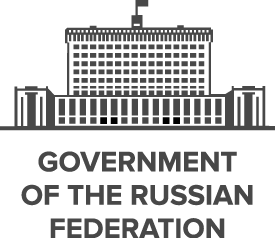Founded in the 12th century, the Principality of Muscovy was able to emerge from over 200 years of Mongol domination (13th-15th centuries) and to gradually conquer and absorb surrounding principalities. In the early 17th century, a new ROMANOV Dynasty continued this policy of expansion across Siberia to the Pacific. Under PETER I (ruled 1682-1725), hegemony was extended to the Baltic Sea and the country was renamed the Russian Empire. During the 19th century, more territorial acquisitions were made in Europe and Asia. Defeat in the Russo-Japanese War of 1904-05 contributed to the Revolution of 1905, which resulted in the formation of a parliament and other reforms. Repeated devastating defeats of the Russian army in World War I led to widespread rioting in the major cities of the Russian Empire and to the overthrow in 1917 of the imperial household. The communists under Vladimir LENIN seized power soon after and formed the USSR. The brutal rule of Iosif STALIN (1928-53) strengthened communist rule and Russian dominance of the Soviet Union at a cost of tens of millions of lives. After defeating Germany in World War II as part of an alliance with the US (1939-1945), the USSR expanded its territory and influence in Eastern Europe and emerged as a global power. The USSR was the principal adversary of the US during the Cold War (1947-1991). The Soviet economy and society stagnated in the decades following Stalin’s rule, until General Secretary Mikhail GORBACHEV (1985-91) introduced glasnost (openness) and perestroika (restructuring) in an attempt to modernize communism, but his initiatives inadvertently released forces that by December 1991 splintered the USSR into Russia and 14 other independent republics.
Following economic and political turmoil during President Boris YELTSIN's term (1991-99), Russia shifted toward a centralized authoritarian state under the leadership of President Vladimir PUTIN (2000-2008, 2012-present) in which the regime seeks to legitimize its rule through managed elections, populist appeals, a foreign policy focused on enhancing the country's geopolitical influence, and commodity-based economic growth. Russia faces a largely subdued rebel movement in Chechnya and some other surrounding regions, although violence still occurs throughout the North Caucasus.
Russia is a semi-presidential federation.
Members:
Resources
Displaying 321 - 325 of 1046Regional Law No. 59-ZRH amending Regional Law No. 12 “On protected areas”.
Article 23 (1) shall be amended to add the following wording: “On the territory of regional protected areas managed by regional state institutions state supervision in the sphere of protection and management of the regional protected areas shall be performed by the officials of the aforesaid institutions”.
Amends: Regional Law No. 12 “On protected areas”. (2012-10-05)
Regional Decree No. 62-p “On the modalities of performance of municipal land control”.
This Regional Decree establishes the modalities of performance of municipal land control by local government. Municipal land control shall be conducted in the form of ordinary and extraordinary inspections of legal persons and individual entrepreneurs. The subject of inspection shall be checking data and information contained in the documentation related to land tenure. The scope of inspection shall be to control compliance by land tenant with compulsory legislative requirements related to land tenure with a view of prevention and suppression of unauthorized transactions with land.
Regional Law No. 501 “On minimum and maximum land area of land plots allotted to natural persons”.
This Regional Law establishes minimum and maximum land area of land plots allotted to natural persons as follows: (a) for farming from 1 ha to 50 ha (with the consideration of specialization of farm, number of workers employed, land quality and other particulars); (b) for stockbreeding form 1 ha to 3 ha; (c) for gardening and suburban residential housing construction from 0, 04 ha to 0, 15 ha; and for horticulture from 0, 03 ha to 0, 15 ha.
Regional Law No. 389 amending Regional Law No. 47 “On land reclamation”.
Article 11 shall be amended to add the following wording: “Public land reclamation systems and separate waterworks pertaining to public ownership cannot be transferred in ownership to natural and legal persons”.
Amends: Regional Law No. 47 “On land reclamation”. (2009-06-30)
Regional Decree No. 150-p “On the modalities of performance of municipal land control”.
This Regional Decree establishes the modalities of performance of municipal land control by local government. Municipal land control shall be conducted in the form of ordinary and extraordinary inspections of legal persons and individual entrepreneurs. The subject of inspection shall be checking data and information contained in the documentation related to land tenure. The scope of inspection shall be to control compliance by land tenant with compulsory legislative requirements related to land tenure with a view of prevention and suppression of unauthorized transactions with land.


